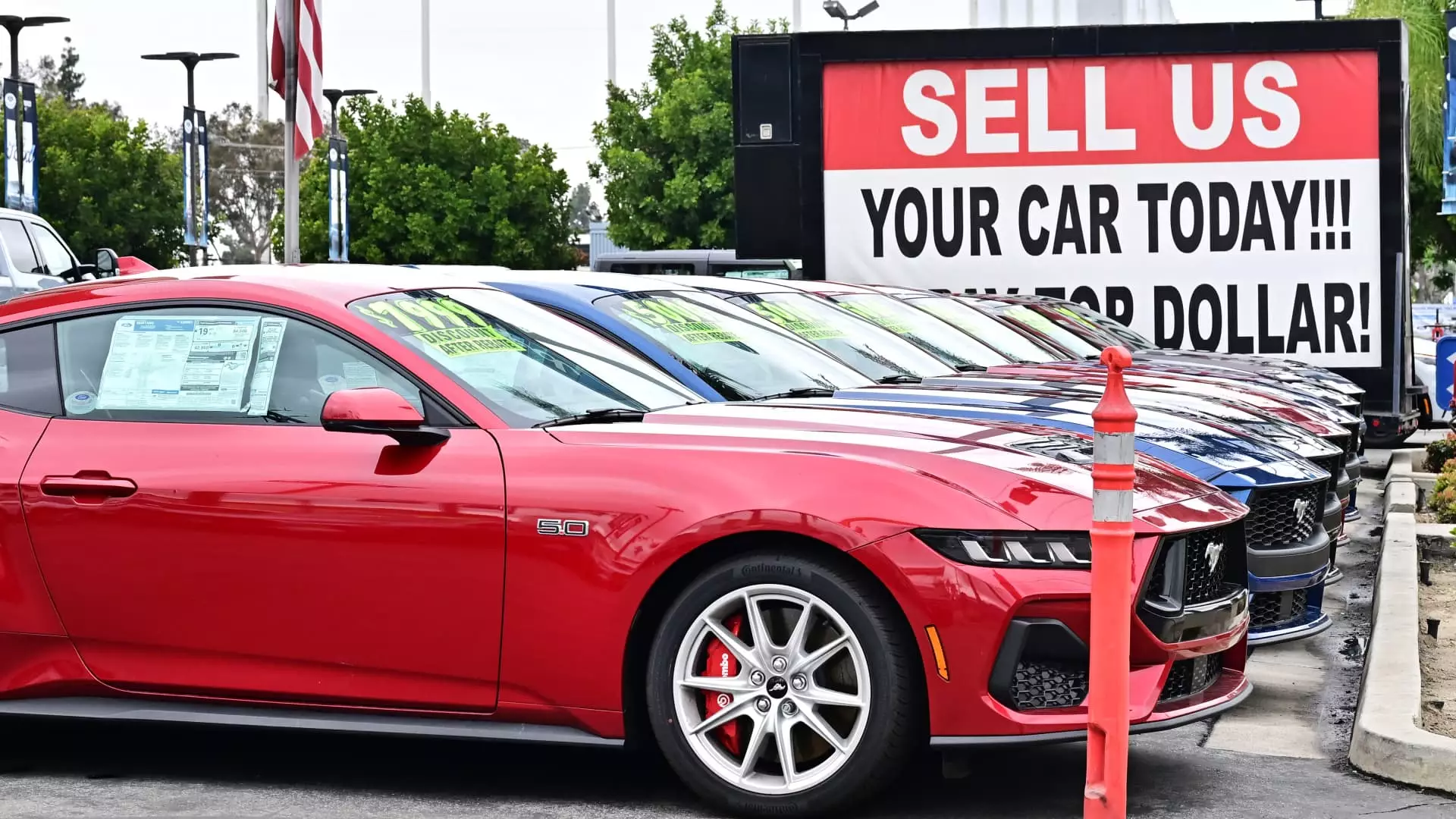In May, a noticeable shift occurred in the used vehicle market, with prices retreating from their peak in April. The Cox Automotive Manheim Used Vehicle Value Index reported a 1.5% decline from April to May, reflecting a broader trend that has left consumers and analysts alike pondering the future. Despite this recent dip, prices remain 4% higher than a year ago, signaling both resilience and vulnerability in the marketplace. The complex interplay of buyer sentiment and external economic factors illustrates a car-buying landscape that is anything but straightforward.
While some consumers rushed to purchase vehicles amid fears of impending price increases due to tariffs, it seems their urgency has waned somewhat. The market’s low inventory—which currently stands at just 2.2 million used vehicles—continues to fuel demand, even as supply issues from the pandemic persist. This means that even as prices fall slightly, the demand for affordable used vehicles remains robust, presenting an interesting contradiction in consumer behavior.
The Tariff Effect and Its Subtle Impact
President Trump’s tariffs on new imported vehicles and parts might not directly impact used car sales; however, the cascading effects on new car prices and production inevitably ripple through the used vehicle market. This demonstrates a critical gap in understanding—while used car prices respond dynamically to new car fluctuations, consumers often lack a clear awareness of how these tariffs influence their buying options. A sense of urgency, spurred by anticipated price hikes, appears to have prompted some consumers into action. Still, the long-term implications of such tariffs could stifle the very industry that is expected to thrive.
In fact, it’s these external pressures that remind us of the unpredictability inherent in the automotive marketplace. Silently lurking behind declining prices are varied economic concerns, including inflation, supply chain disruptions, and changing consumer preferences—factors that aren’t going away, even if wholesale prices stabilize.
Consumer Behavior and Market Challenges
As consumers hold onto their vehicles for longer periods, the pandemic has led to a transformation in buyer habits. The reality that many individuals now drive older cars elevates the urgency for finding reliable, affordable used vehicles. The automotive industry, still reeling from production limitations, has left potential buyers grappling with a lack of options. A slight 3% reduction in retail used vehicle sales from April to May further indicates that while prices are fluctuating, the availability remains a pressing issue.
Additionally, the high retail prices for consumers, which haven’t dropped as quickly as wholesale prices, suggest a lag in market adaptation. It raises an essential question: when will we see the retail prices truly reflect these changes? If the automotive industry continues to face challenges, consumers may find themselves in a perpetual cycle of high prices coupled with diminished choices.
Overall, the utilized vehicle market’s current state embodies the intricacies of economic pressures, consumer behavior, and industry dynamics. Understanding the motivations and factors shaping this landscape is crucial as buyers navigate their choices in an increasingly unpredictable marketplace. The lingering question remains: how will these forces evolve as we move further into 2024?

